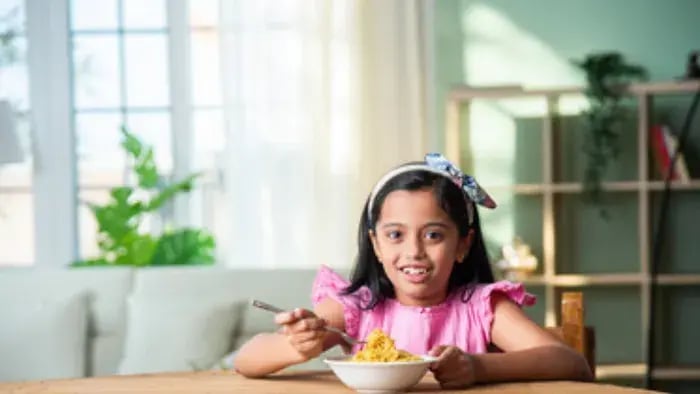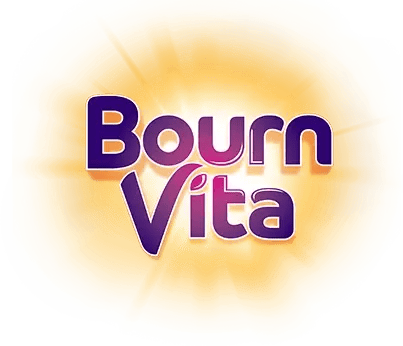- Milk and Dairy
- Pulses and Legumes
- Eggs
- Green Leafy Vegetables
- Seasonal Fruits
- Whole Grains
- Nuts and Seeds
Introduction

Childhood is a time of non-stop activity and rapid growth, and food plays a big role in how children develop. Every bite gives them strength, energy, focus, and immunity. Filling plates may seem simple, but the challenge is to make sure those plates have the right mix of nutrients. A balanced diet for kids fuels their body with enough proteins, healthy fats, carbohydrates, vitamins and minerals to support learning, play and overall well-being.
Balanced eating doesn’t have to mean complicated recipes or new foods. In fact most of what children need for growth is already in your kitchen. Fresh fruits, green veggies, whole grains, nuts and dairy are a treasure trove of nutrients that build stronger bones, sharper memory and a more resilient immune system. Small changes like swapping refined snacks for whole ones or adding a seasonal fruit to meals can have long term benefits.
Every stage of growth requires slightly different nutrition but variety and balance is key at all ages. A colourful plate not only excites a child’s appetite but also ensures different food groups come together to provide complete nourishment. With thoughtful choices and regular inclusion of nutrient dense foods, kids can have meals that are both yummy and supportive of their long term health.
7 Foods That Make a Child’s Plate Truly Balanced

Children’s growth years are filled with energy, curiosity, and learning. To support this journey, food becomes more than just a daily routine, it becomes the building block of their health and development. A balanced diet for kids includes the right mix of proteins, carbohydrates, healthy fats, vitamins, and minerals. Together, these nutrients provide the strength to play, the focus to study, and the immunity to fight off illnesses.
Milk and Dairy
Milk, curd, and paneer are simple but powerful foods for children. According to a study published in Front Nutr. 2024 they provide calcium for bones, protein for muscles, and Vitamin B12 for energy. A glass of milk in the morning, curd in lunch, or paneer in curries ensures steady growth. For lactose-intolerant kids, alternatives like ragi or fortified soy milk can provide similar benefits.
Pulses and Legumes
According to the Dietary Guidelines for Indians, pulses like moong dal, masoor dal, chana, and rajma are excellent plant-based proteins. They also provide iron and fiber, which improve blood health and digestion. A bowl of dal with rice or sprouted moong salad adds variety while meeting essential protein needs.
Eggs
Eggs provide all the essential amino acids, making them a complete protein source. Research conducted by Nutrients. 2019 shows that they also supply Vitamin D for bones and choline for brain development. Boiled eggs in the tiffin or an omelet for breakfast give kids energy and sharper focus for school.
Green Leafy Vegetables
Leafy greens are rich in iron, Vitamin A, Vitamin C, and folate. A study published in Molecules. 2022 highlights that these nutrients help in blood formation, improve vision, and strengthen immunity. Palak paratha, spinach soup, or stir-fried greens are easy ways to make them part of meals.
Seasonal Fruits
Fruits like mangoes, guavas, bananas, and apples supply Vitamin C, potassium, and fiber. Research conducted by Foods. 2024 shows that these support immunity, digestion, and steady energy levels. Offering fruits as snacks or blending them into smoothies is a simple way to add nutrition.
Whole Grains
A study published in Nutr Rev. 2012 says that whole grains give complex carbohydrates that release energy slowly. They also add fiber, keeping digestion smooth. Rotis made with wheat or millet flour, brown rice, or oats porridge provide children with lasting energy for school and play.
Nuts and Seeds
According to FSSAI, nuts and seeds provide protein, healthy fats, Vitamin E, and zinc, all of which support brain function and immunity. A handful of soaked almonds, walnut pieces in kheer, or flaxseeds in smoothies are easy, tasty options to include daily.
Conclusion

A balanced diet for kids is about variety and smart choices rather than restrictions. By including dairy, pulses, eggs, leafy greens, fruits, grains, and nuts, you cover the full spectrum of nutrients a child needs. These everyday foods build stronger bones, sharper minds, and healthier bodies. With consistency and creativity, every meal can become a step toward better growth, resilience, and lifelong healthy habits.
Her love for storytelling began with reading her grandfather’s speeches, where Tarishi saw the power of words in creating lasting memories. Combining her passions for food and writing, she has turned her life into a fulfilling path of sharing stories that celebrate flavours and how food brings communities together.
The views expressed are that of the expert alone.
The information provided in this content is for informational purposes only and should not be considered a substitute for professional medical advice, diagnosis, or treatment. Always seek the advice of your physician or another qualified healthcare provider before making any significant changes to your diet, exercise, or medication routines. This is a sponsored article.
References
https://fssai.gov.in/upload/knowledge_hub/852185f89a7fc009c5Book_Do_You_Eat_Right_16_10_2020.pdf
https://pmc.ncbi.nlm.nih.gov/articles/PMC3146027/
https://pmc.ncbi.nlm.nih.gov/articles/PMC10969708/
https://pmc.ncbi.nlm.nih.gov/articles/PMC9696032/
https://pmc.ncbi.nlm.nih.gov/articles/PMC6470839/
https://www.nin.res.in/dietaryguidelines/pdfjs/locale/DGI24thJune2024fin.pdf
















